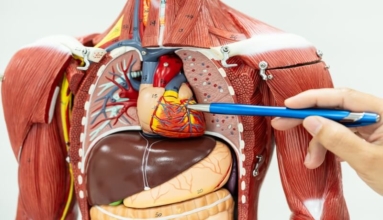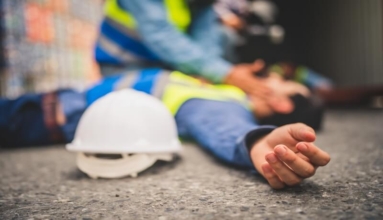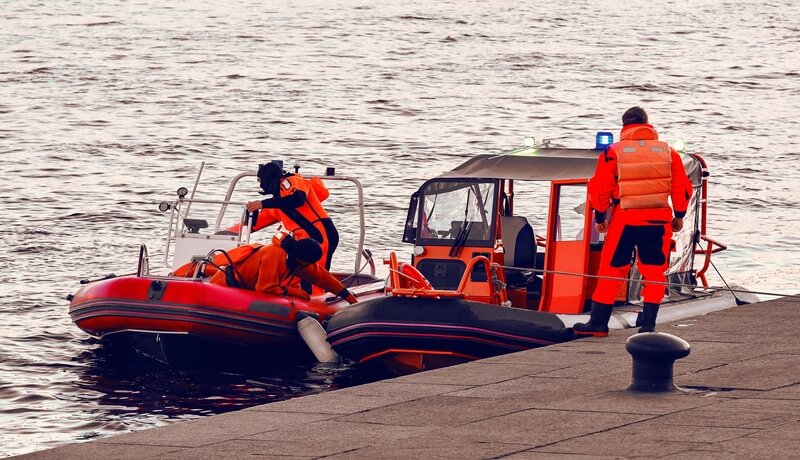Telemedicine services online
The Importance of Basic Human Anatomy Knowledge for Maritime Rescuers
In the world of maritime rescue, every second matters. Rescuers must act quickly and make informed decisions under immense pressure. One essential skill that can greatly impact the outcome of these emergencies is a solid understanding of basic human anatomy. This knowledge enables maritime rescuers to provide effective first aid, stabilize injured sailors, and significantly improve survival rates until more advanced medical help becomes available.
What is Human Anatomy?
Human anatomy is the scientific study of the structure of the human body. It focuses on the identification and understanding of various body parts, such as muscles, bones, organs, and tissues, and how they work together to support life. Anatomy helps explain the body’s physical form and how its systems—like the circulatory, respiratory, and nervous systems—are interconnected to perform essential functions.
Understanding human anatomy is crucial for healthcare professionals and anyone involved in medical or rescue services, as it helps them accurately assess injuries, perform medical procedures, and understand how the body responds to different treatments or traumas.
Human anatomy is typically divided into two main areas:
- Gross Anatomy: The study of body parts that are visible to the naked eye, like muscles, bones, and organs.
- Microscopic Anatomy: Also known as histology, this focuses on the cellular and tissue structure of the body, which can only be seen through a microscope.

Why is Basic Human Anatomy Knowledge Essential?
Maritime rescuers often encounter medical emergencies in unpredictable environments. In these critical moments, knowing how the human body works can make all the difference. Understanding human anatomy not only helps in assessing injuries but also ensures that first aid interventions are accurate and effective. Let’s explore the key reasons why this knowledge is crucial for maritime rescuers.
Accurate Assessment of Injuries
A thorough knowledge of muscles, bones, and internal organs allows rescuers to quickly assess the severity of injuries. This is especially important in situations where every second counts, such as traumatic accidents or severe medical emergencies. For instance, knowing the layout of major organs can help rescuers determine whether an injury is life-threatening or manageable.
For example, if a sailor has a chest wound, understanding the location of vital organs like the heart and lungs can help a rescuer gauge the potential damage and decide whether immediate intervention is necessary. This level of insight helps rescuers provide more effective care, ultimately increasing the chances of survival.
Effective First Aid Techniques
First aid is an essential skill in maritime rescues, and understanding the human body enhances the effectiveness of these interventions. Rescuers who are familiar with the body’s systems can provide targeted care when performing life-saving techniques such as:
- CPR and airway management
- Bandaging wounds
- Stopping excessive bleeding
- Immobilizing broken limbs
With a solid foundation in anatomy, rescuers can ensure that these techniques are performed correctly, reducing the risk of complications and improving the chances of recovery.
Avoiding Further Harm
In high-pressure situations, even well-intentioned rescuers can cause unintended harm if they lack anatomical knowledge. For instance, improper handling of a broken limb or applying pressure to the wrong artery can worsen injuries rather than help. By knowing which areas of the body are most vulnerable and how to avoid causing further damage, rescuers can confidently provide care that stabilizes patients rather than exacerbating their condition.
Clear Communication with Medical Professionals
During maritime rescues, telemedicine plays an increasingly vital role. In many cases, rescuers must relay information about the injured crew member to a medical team located far from the vessel. A strong understanding of anatomy enables rescuers to communicate injuries more clearly and accurately, ensuring that the medical team receives precise information. This helps the remote medical team give better guidance on treatments, which can make all the difference before the vessel reaches port or before an evacuation occurs.
How Anatomy Knowledge Can Save Lives
In maritime environments, injuries such as traumatic accidents, near-drownings, and severe medical emergencies are common. Knowing how the human body functions can speed up critical interventions. Let’s look at a few scenarios where anatomy knowledge directly saves lives:
Airway Management and CPR
Understanding the anatomy of the respiratory system is critical when performing airway management or CPR. In the event of a near-drowning, quick action is needed to clear the airway and restore normal breathing. Rescuers with knowledge of the respiratory system can perform these tasks more efficiently and confidently, ensuring that oxygen is delivered where it’s needed most.
Controlling Life-Threatening Bleeding
Severe injuries, such as those caused by falls or equipment malfunctions, can lead to hemorrhages. In these situations, understanding where the body’s major arteries and veins are located helps rescuers apply pressure correctly and control bleeding until professional medical help arrives.
For example, applying pressure to the wrong location or mishandling a tourniquet can result in further complications. Anatomy knowledge ensures that rescuers can target the exact points needed to control bleeding, improving the chances of survival.

Assessing and Treating Everyday Injuries
While serious injuries are a major concern, everyday injuries such as sprains or cuts are also common during maritime rescues. Knowing the structure of muscles and bones allows rescuers to assess whether a sailor can continue their duties or needs rest and recovery.
Investing in Anatomy Knowledge: A Lifesaving Skill
Mastering basic human anatomy is a critical step toward becoming a highly effective maritime rescuer. Whether you are dealing with a minor injury or a life-threatening emergency, anatomy knowledge can make the difference between a successful rescue and a tragic outcome. By investing time in understanding the structure and function of the human body, maritime rescuers not only enhance their first aid capabilities but also play a key role in keeping crew members safe while at sea.
In conclusion, understanding human anatomy is essential for any maritime rescuer. It enhances the accuracy of first aid, prevents further harm, and facilitates clearer communication with medical teams. Equip yourself with this vital knowledge to ensure the safety and well-being of your crew on every voyage.
Request your appointment by clicking on the picture below.

